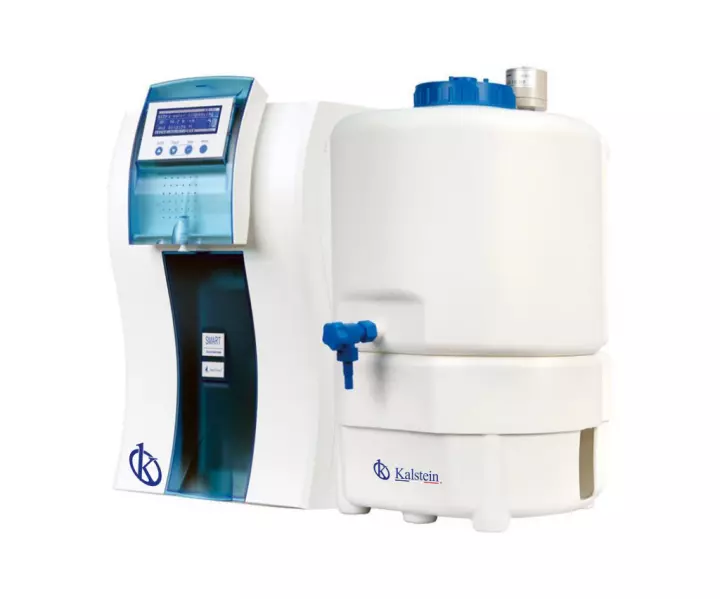Water distillers
Equipment required in laboratories for the separation of mixtures of components in liquid state, by vaporization and condensation; is used in multiple functions within clinical and industrial laboratories, since it allows to obtain water of great purity, from drinking water supplied through urban services.
The water that is distilled lacks suspended solids, and is used in a variety of applications in health and industry, such as: preparation of reagents, washing and sterilization of laboratory units, preparation of biological material, among other uses within companies; preparation of perfumes, medicines.
Advantages of using KALSTEIN Water Distillers
- It works automatically, therefore, it is very easy and convenient to use.
- Designed with a glass bucket on top, the operator can observe the distillation process.
- Saving water and energy.
- It comes with overload protection to ensure reliable and safe operation.
- It has a protection function against water shortages.
Disadvantages of water distillers
- It is not recommended for some mixtures of components that do not have boiling points very close.
- Some mixtures can undergo a decomposition process.
- It is not recommended to work with substances that are easily reactive or corrosive.
Ion exchange systems
It is carried out by means of a polymer in the form of tiny spheres that are capable of exchanging ions, in a solution that passes through them, this exchange of ions is used for waterpurification; the main objective in this process is to remove the mineral content of water; the water is softened by using a resin containing sodium cations and exchanges them for calcium and magnesium.
There are different processes that use ion exchange; such as:
- Water softener.
- De-alkalinization.
- Decationisación.
- Mixed bed.
- Removal of metals.
Advantages of using the ion exchange system
- It is environmentally friendly.
- It provides a high flow of treated water.
- It has low maintenance cost.
Disadvantages of using the ion exchange system
- Formation of calcium sulfate scales.
- Iron inlays.
- The absorption of organic matter.
- Organic contamination of the resin.
- Bacterial contamination.
- Chlorine contamination.
Reverse osmosis
It is a process that is carried out through membrane technology for the production of pure water, with a low salt content, free of viruses and chemical contaminants; semipermeable membranes are used whose configuration varies depending on the nature of the water to be treated, this process facilitates the passage of dissolved gases and molecules without electrostatic charge of low molecular weight.
Usually this process is used for the production of pure water in the chemical, food, energy, electronics industry; for the treatment of saline discharges in which it is necessary to eliminate their conductivity, for the distillation of seawater, it makes it possible to reduce water consumption thanks to its regeneration and reuse.
Advantages of reverse osmosis
- They are environmentally friendly systems.
- They require a minimum amount of energy.
- They occupy less space than other water treatment systems.
- They are fully automated.
Disadvantages of reverse osmosis
- It also removes healthy minerals found in water.
- It is not recommended to drink purified water by reverse osmosis, as it becomes acidic.
- It uses sediment filter systems that can clog or damage the membrane.
- It is a slow process that produces few gallons of water a day, compared to other more advanced processes.
- The ratio of discarded water to usable water varies from 2 to 1 (2 liters of discarded water per 1 liter of water to consume) to 12 to 1.
The different processes described here for water purification, their advantages and disadvantages; correspond mainly to the range of applications for which their use is required; if you have doubts about which one to buy, being necessary and indispensable for you; do not hesitate to contact us Kalstein We are a manufacturer of laboratory equipment of international coverage with the best offers in sales/ purchase online HERE


